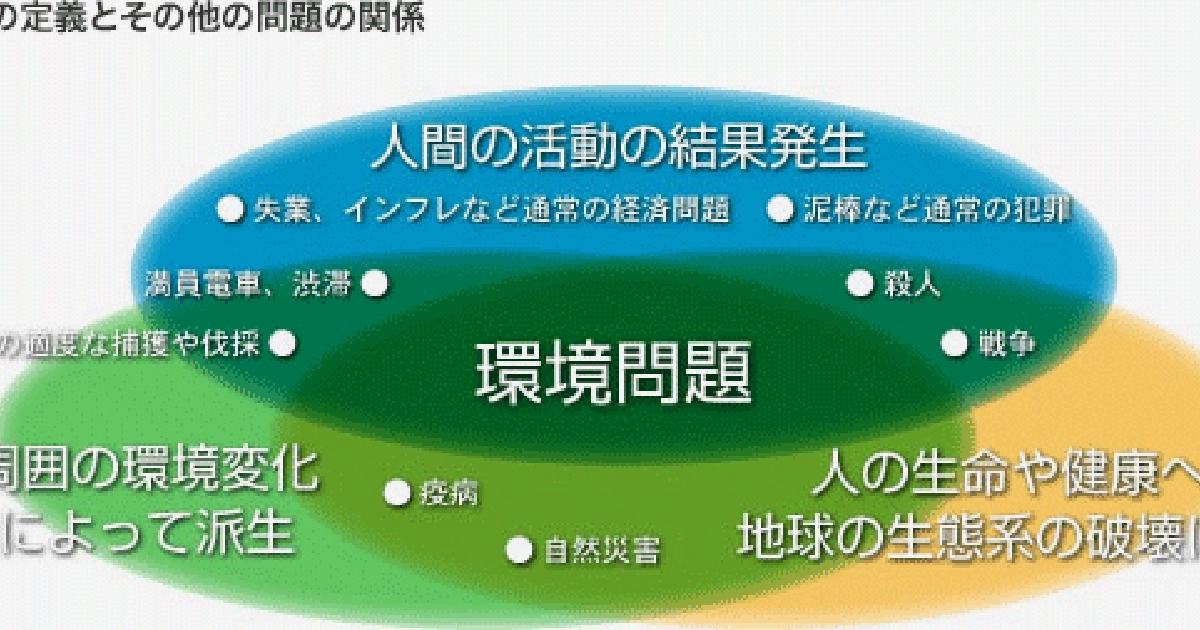Representative's Green Column
5. Three major environmental problems
2008.08.30
In the previous column, I covered a wide range of questions such as "What are the environmental problems?" This time, I would like to plot the scale of damage caused by these problems on the two axes of"regional size of damage" and "duration of continuous damage" even if effective measures are taken.
For example, consider "noise." The "regional magnitude of damage" of "noise" is basically the range in which sound can be heard. Therefore, it can be said that the "regional size of damage" is smaller than other problems. For example, is it in the range of several hundred meters to 1 km? Also, regarding the "period in which damage continues", if the sound source of noise is stopped, the damage of "noise" itself will end at that moment. Therefore, it is considered that the "period in which damage continues" is quite short after taking measures.
Conversely, when considering "rapid warming," the "regional size of damage" is global. Even if effective countermeasures are taken to solve the problem, it seems that the effect will not be realized in several decades. Therefore, it is highly likely that the "duration of continuous damage" will be several decades or nearly a hundred years.
Regarding "use and disposal of radioactive materials", if a large amount of radioactivity leaks due to it, the "regional size of damage" may not reach the entire globe, but one country. It is a problem beyond the range of, that is, across national borders, so I think that it can be considered as several thousand kilometers, for example. In that case, the half-life of radioactive materials is tens of millions to hundreds of millions of years (for example, uranium-235 is about 700 million years and plutonium-239 is 24 million years). Given that, the damage and its risks are likely to last semi-permanently.
In this way, various environmental problems are plotted by "regional size of damage" and "duration of damage" in Fig. 2 "Position of each environmental problem according to the scale of damage". However, please note that the plot is fairly rough.
If the "scale of damage" = "regional size of damage" x "duration of continuous damage" of each environmental problem is roughly expressed, the scale of damage is larger in the upper right of the graph in Fig. 2. You can see it like this. (It's just a rough plot. I think there is a difference of about an order of magnitude.)
From this point of view, at this point in time, there are likely to be the following four issues that must be addressed globally from a longer-term perspective. In other words, there are four things: "insufficient energy resources, water, and food," "rapid warming," "ozone depletion," and "use and disposal of radioactive materials."
Of these four, with regard to "depletion of the ozone layer," countries around the world are working together to implement countermeasures for what should be done. Specifically, as an international initiative, it is an ozone-depleting substance according to the "Vienna Convention for the Protection of the Ozone Layer" (1985) and the "Montreal Protocol on Substances that Deplete the Ozone Layer" (1987). Production regulations and emission control for fluorocarbons are being carried out.
Regarding the other three, it seems that drastic effective measures that the whole world is in step with are still in the future.

August 30, 2008 Hironobu Matsui


